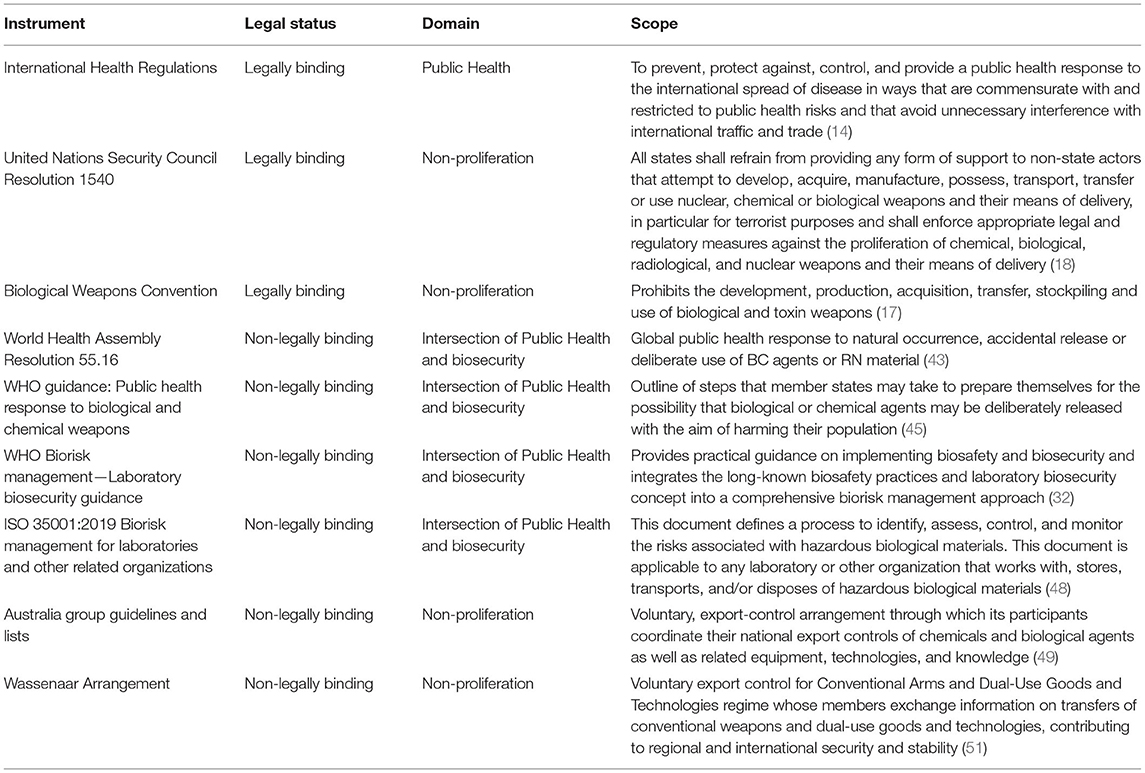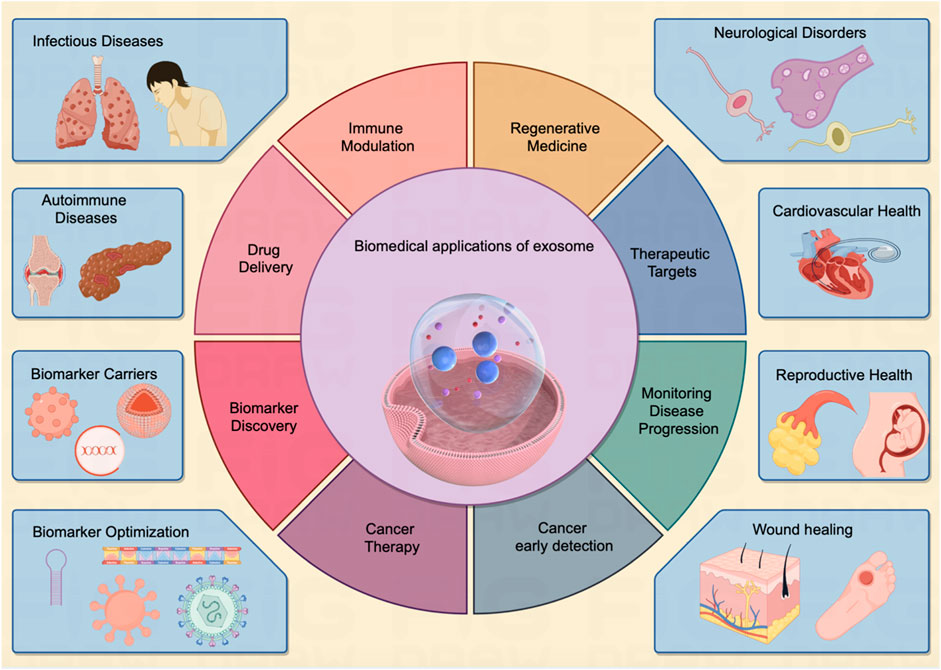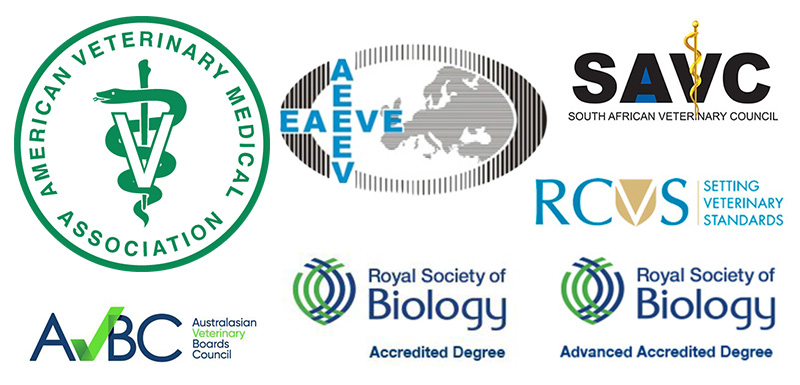Report on the 42nd Meeting of the IHR Emergency Committee on Poliovirus
Introduction: Aligning Polio Eradication with Sustainable Development Goals
On 18 June 2025, the World Health Organization (WHO) convened the Forty-second meeting of the Emergency Committee under the International Health Regulations (2005) to address the international spread of poliovirus. The committee reviewed current data on wild poliovirus (WPV1) and circulating vaccine-derived polioviruses (cVDPV). This report summarizes the findings, emphasizing the critical link between polio eradication efforts and the achievement of the Sustainable Development Goals (SDGs), particularly SDG 3 (Good Health and Well-being), which aims to end the epidemic of communicable diseases by 2030, and SDG 17 (Partnerships for the Goals), which underscores the need for global cooperation.
Status of Wild Poliovirus (WPV1)
Epidemiological Data and Trends
The persistence of WPV1 presents a significant challenge to achieving SDG 3. The committee reviewed the following data:
- 2025 Cases (as of June 18): 13 WPV1 cases reported (1 in Afghanistan, 8 in Pakistan).
- 2024 Total Cases: 99 WPV1 cases reported (25 in Afghanistan, 74 in Pakistan).
- 2025 Environmental Samples (as of June 4): 275 WPV1 positive samples (30 from Afghanistan, 245 from Pakistan).
- 2024 Total Environmental Samples: 741 WPV1 positive samples (113 from Afghanistan, 628 from Pakistan).
Analysis of Transmission and Barriers to SDG 3
The data indicates a persistent upward trend in WPV1 transmission in both endemic countries, undermining progress towards SDG Target 3.3 (end epidemics). Key challenges include:
- Geographic Expansion: WPV1 has spread to new provinces and districts in both Afghanistan and Pakistan, including a case in Pakistan’s Gilgit-Baltistan province after an eight-year absence. This highlights gaps in achieving SDG Target 3.8 (universal health coverage, including access to vaccines).
- Genetic Biodiversity: An increase in genetic biodiversity in 2024 has complicated eradication efforts, with transmission chains persisting in areas with low immunization coverage.
- Vaccination Campaign Challenges:
- In Afghanistan, the “site-to-site” campaign strategy often fails to reach all children, particularly infants and girls, posing a risk to both SDG 3 and SDG 5 (Gender Equality).
- In Pakistan, despite high-level political commitment, campaign quality varies at sub-district levels due to operational gaps and insecurity.
- Population Movement: The return of undocumented migrants from Pakistan to Afghanistan and other seasonal movements heighten the risk of cross-border transmission, requiring robust cross-border cooperation in line with SDG 17.
Status of Circulating Vaccine-Derived Polioviruses (cVDPV)
Epidemiological Data and Global Spread
The spread of cVDPV continues to threaten global health security and the attainment of SDG 3. A new cVDPV2 outbreak was reported in Papua New Guinea.
- 2025 Data (as of June 4): 67 total cVDPV cases (65 cVDPV2, 2 cVDPV3) and 69 positive environmental samples (all cVDPV2).
- 2024 Data: 319 total cVDPV cases (304 cVDPV2, 11 cVDPV1, 4 cVDPV3) and 276 positive environmental samples.
- cVDPV1: No cases reported in 2025. The outbreak in Madagascar has been successfully closed, a positive step for SDG 3.
- cVDPV3: Transmission continues in Guinea, with two cases in 2025, highlighting localized challenges to eradication.
Analysis of Risk Factors
The risk of cVDPV outbreaks is driven by factors that directly impede progress on the SDGs:
- Gaps in Health Systems: Inaccessibility, insecurity, and high concentrations of zero-dose children create vulnerable populations, contrary to the principles of universal health coverage in SDG 3.8.
- nOPV2 Performance: While the novel OPV2 vaccine shows greater genetic stability, 30 emergences have been associated with its use since 2021, underscoring the need for high-quality, timely vaccination campaigns to mitigate risks.
Conclusion: PHEIC Declaration and its Importance for the SDGs
The Committee unanimously agreed that the risk of international spread of poliovirus continues to constitute a Public Health Emergency of International Concern (PHEIC). This determination is essential to maintain global focus and mobilize resources necessary to achieve the eradication goals outlined in SDG 3. The Committee recommended extending the Temporary Recommendations for a further three months.
Risk Assessment
Ongoing Risk of WPV1 International Spread
The following factors represent a continued threat to global health and the achievement of SDG 3:
- Re-established WPV1 transmission in core reservoirs in Afghanistan and Pakistan.
- Geographic spread to previously polio-free areas.
- Intense transmission indicated by a high number of positive environmental samples.
- Sub-optimal vaccination strategies in Afghanistan (lack of house-to-house campaigns).
- Inconsistent campaign quality and security challenges in Pakistan.
- Significant cross-border population movement between endemic countries.
Ongoing Risk of cVDPV International Spread
The risk of cVDPV spread remains high due to:
- Ongoing cross-border transmission into new countries.
- Intensifying transmission in critical areas like the Lake Chad Basin and the Horn of Africa, often exacerbated by humanitarian emergencies.
- Large pools of unimmunized children in regions like northern Yemen.
- Widening population immunity gaps since the withdrawal of OPV2 in 2016.
- Continued cVDPV3 transmission in Guinea.
Systemic Factors Impeding Progress
- Sub-optimal Routine Immunization: Weak health systems, impacted by humanitarian crises, undermine the foundation of SDG 3.8.
- Insecurity and Lack of Access: Conflict prevents vaccines from reaching vulnerable populations in areas like northern Yemen and Somalia.
- Resource Constraints: A nearly 40% funding shortfall for the Global Polio Eradication Initiative jeopardizes all eradication activities, including surveillance and vaccination, threatening to reverse progress made towards SDG 3.
Temporary Recommendations
Risk Categories
The Committee advised the Director-General based on the following risk stratification:
- States infected with WPV1, cVDPV1, or cVDPV3.
- States infected with cVDPV2, with or without evidence of local transmission.
- States previously infected by WPV1 or cVDPV within the last 24 months.
States Infected with WPV1, cVDPV1, or cVDPV3
(Afghanistan, Pakistan, Mozambique, DR Congo, French Guiana (France), Guinea)
These countries should:
- Declare or maintain the interruption of poliovirus transmission as a national public health emergency.
- Ensure all residents and long-term visitors receive a dose of polio vaccine (bOPV or IPV) between 4 weeks and 12 months prior to international travel and provide an International Certificate of Vaccination.
- Restrict international travel of any resident lacking documentation of appropriate polio vaccination.
- Enhance cross-border coordination to increase vaccination coverage of travelers, a key action for SDG 17.
- Intensify efforts to increase routine immunization coverage to achieve SDG 3.8, including introducing a second dose of IPV.
- Provide regular reports on the implementation of these recommendations.
States Infected with cVDPV2
(Includes 36 countries such as Algeria, Angola, Nigeria, Papua New Guinea, Yemen, and several in Europe)
States with local transmission should:
- Encourage residents and long-term visitors to receive a dose of IPV prior to international travel.
- Intensify regional cooperation and cross-border coordination to enhance surveillance and vaccinate high-risk populations.
States with importation but no evidence of local transmission should:
- Declare the situation a national public health emergency.
- Undertake urgent risk assessments to determine if local transmission has occurred.
- Intensify efforts to increase routine immunization coverage, a cornerstone of SDG 3.
- Strengthen surveillance and regional cooperation for timely detection.
States No Longer Infected but Previously Infected (within 24 months)
(Includes 10 countries such as Botswana, Madagascar, Mali, and Zambia)
These countries should:
- Urgently strengthen routine immunization to maintain population immunity.
- Enhance surveillance quality to reduce the risk of undetected transmission.
- Intensify efforts to vaccinate mobile, cross-border, and other vulnerable populations.
- Enhance regional cooperation, reflecting the spirit of SDG 17.
1. Which SDGs are addressed or connected to the issues highlighted in the article?
SDG 3: Good Health and Well-being
- The entire article is centered on the global effort to eradicate poliovirus, a communicable disease. It discusses the incidence of wild poliovirus (WPV1) and circulating vaccine-derived polioviruses (cVDPV), vaccination campaigns, and the public health response under the International Health Regulations (IHR). This directly aligns with the goal of ensuring healthy lives and promoting well-being for all at all ages.
SDG 16: Peace, Justice and Strong Institutions
- The article repeatedly highlights how “insecurity,” “conflict,” and “humanitarian emergencies” are significant barriers to polio eradication efforts. It mentions these challenges in Afghanistan, Pakistan, Yemen, Somalia, and the Horn of Africa, where conflict disrupts routine immunization and vaccination campaigns. The inability to conduct “house-to-house vaccination campaigns in Afghanistan” is a direct consequence of the security situation, linking the lack of peace to negative health outcomes.
SDG 17: Partnerships for the Goals
- The article describes a multi-faceted international effort involving numerous stakeholders. The meeting itself is convened by the WHO Director-General and includes an Emergency Committee, advisers, and representatives from affected countries. It mentions the Global Polio Eradication Initiative (GPEI), coordination with the International Organization for Migration (IOM) and the United Nations High Commissioner for Refugees (UNHCR), and calls for financial support from “donor countries and partner organizations.” The emphasis on “cross-border coordination” between countries like Afghanistan and Pakistan further underscores the theme of partnership.
2. What specific targets under those SDGs can be identified based on the article’s content?
SDG 3: Good Health and Well-being
-
Target 3.3: By 2030, end the epidemics of AIDS, tuberculosis, malaria and neglected tropical diseases and combat hepatitis, water-borne diseases and other communicable diseases.
The article’s core subject is the eradication of poliovirus, a communicable disease. The global targets mentioned, “interruption and certification of WPV1 eradication by 2027 and interruption and certification of cVDPV2 elimination by 2029,” are specific goals that fall directly under the ambition of ending epidemics of communicable diseases. -
Target 3.8: Achieve universal health coverage, including financial risk protection, access to quality essential health-care services and access to safe, effective, quality and affordable essential medicines and vaccines for all.
The article discusses challenges in reaching “zero-dose and under-immunized children” and the need to “increase routine immunization coverage.” The implementation of nationwide vaccination campaigns in Afghanistan and Pakistan and the administration of “bivalent oral poliovirus vaccine (bOPV) or inactivated poliovirus vaccine (IPV)” are efforts to provide essential health services (vaccination) to all. -
Target 3.b: Support the research and development of vaccines and medicines for the communicable and non-communicable diseases that primarily affect developing countries…
The article mentions the development and use of the “novel OPV2 (nOPV2) vaccine,” noting that “approximately 1.65 billion doses of nOPV2 have been administered” since 2021. It highlights that nOPV2 demonstrates “significantly greater genetic stability” than the previous vaccine, which is a direct outcome of research and development aimed at improving tools to fight diseases affecting developing countries.
SDG 16: Peace, Justice and Strong Institutions
-
Target 16.1: Significantly reduce all forms of violence and related death rates everywhere.
While not aiming to reduce violence directly, the article clearly identifies “ongoing insecurity and conflict in many areas” as a primary cause for the persistence of polio. It states that these factors “disrupt both routine immunization services and polio vaccination campaigns,” demonstrating the direct link between the lack of peace and the failure to achieve public health goals.
SDG 17: Partnerships for the Goals
-
Target 17.2: Developed countries to implement fully their official development assistance commitments…
The article highlights a “financial shortfall, estimated at nearly 40%” for the Global Polio Eradication Initiative and explicitly “urged donor countries and partner organizations to strengthen their financial support,” which is a direct call for fulfilling development assistance commitments for global health programs. -
Target 17.16: Enhance the global partnership for sustainable development, complemented by multi-stakeholder partnerships that mobilize and share knowledge, expertise, technology and financial resources…
The entire structure described in the article—the WHO Emergency Committee, the GPEI, coordination between Afghanistan and Pakistan, and collaboration with IOM and UNHCR—is a textbook example of a multi-stakeholder global partnership working to achieve a common goal.
3. Are there any indicators mentioned or implied in the article that can be used to measure progress towards the identified targets?
Indicators for SDG 3 Targets
-
For Target 3.3 (End epidemics): The article is replete with quantitative indicators used to track the polio epidemic.
- Incidence of poliomyelitis: Measured by the “nine new WPV1 cases” and “67 cVDPV cases” reported in 2025. The article compares these figures to previous years (e.g., “99 WPV1 cases… in 2024”).
- Environmental surveillance data: The “275 WPV1 positive environmental samples” and “69 environmental samples have tested positive for cVDPV” are used as key indicators of virus circulation.
-
For Target 3.8 / 3.b (Universal Health Coverage / Vaccines): Progress towards vaccination coverage is measured through several indicators.
- Proportion of population covered by vaccines: The article refers to “high vaccination coverage,” “low immunization coverage,” and “Lot Quality Assurance Sampling (LQAS) pass rates.” It also mentions the number of vaccination rounds implemented in Afghanistan and Pakistan.
- Number of vaccine doses administered: The article states that “approximately 1.65 billion doses of nOPV2 have been administered” since 2021.
- Proportion of “zero-dose” children: The presence of “high concentrations of zero-dose and under-immunized children” is cited as a major risk factor, implying this is a key metric being tracked.
Indicators for SDG 16 Target
-
For Target 16.1 (Reduce violence): The article provides qualitative indicators of the impact of conflict on service delivery.
- Accessibility of populations for health services: The article notes that “inaccessibility continues to be a major risk, particularly in northern Yemen and Somalia which have sizable populations that have been unreached with polio vaccine.” The inability to conduct “house-to-house vaccination campaigns in Afghanistan” is a direct indicator of how insecurity impedes essential services.
Indicators for SDG 17 Targets
-
For Target 17.2 / 17.16 (Partnerships/Finance): The article provides indicators related to financial support and collaboration.
- Volume of development assistance for global programs: The “financial shortfall, estimated at nearly 40%” for the GPEI is a direct financial indicator of the gap in funding for this global partnership.
- Mechanisms for international cooperation: The existence and functioning of the WHO Emergency Committee, the GPEI, and “cross-border coordination” efforts are themselves indicators of active partnerships.
4. Create a table with three columns titled ‘SDGs, Targets and Indicators” to present the findings from analyzing the article.
| SDGs | Targets | Indicators Identified in the Article |
|---|---|---|
| SDG 3: Good Health and Well-being |
3.3: End the epidemics of… communicable diseases.
3.8: Achieve universal health coverage, including… access to… vaccines for all. 3.b: Support the research and development of vaccines… |
|
| SDG 16: Peace, Justice and Strong Institutions | 16.1: Significantly reduce all forms of violence and related death rates everywhere. |
|
| SDG 17: Partnerships for the Goals |
17.2: Developed countries to implement fully their official development assistance commitments…
17.16: Enhance the global partnership for sustainable development… |
|
Source: who.int







